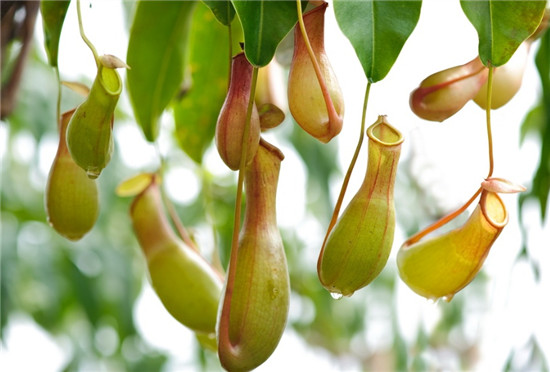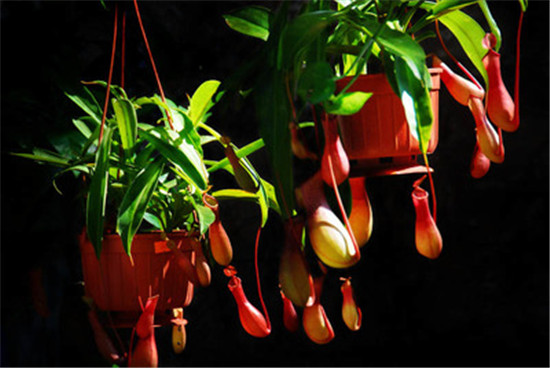Introduction of giant pitcher plant
The giant pitcher plant is a new species of pitcher plant, which is so large that it can even devour prey the size of a mouse. Next, let's take a look at the introduction of giant pitcher plants.

Rumors of the existence of this new pitcher plant species first came from two Christian missionaries. As early as 2000, the two missionaries tried to explore the summit of Mount Victoria in the central Palawan of the Philippines, and then they claimed to have discovered a new species of pitcher plant.
The missionary's words aroused the interest of nature explorer Stewart McPherson, British botanist Alastair Robinson and Filipino botanist Walker Heridge. All three are experts in pitcher plant research and have visited many remote places in search of pitcher plant varieties. Led by three local guides, the trio set off in 2007 for a two-month Victorian expedition in search of novel plant varieties. In the Victorian lowland forest, three people discovered a large variety of pitcher plants that scientists had previously discovered.

Leaves grow regularly from the stem. The structure in which a leaf is connected to a stem is called a petiole. There is a cage vine at the end of each long and narrow leaf. At the tip of the cage vine is a small bud that can develop into an insect trap. The leaves of insect traps are very different from those of ordinary plants, so they are regarded as abnormal leaves. And what we see is the same part of the leaves of ordinary plants is actually the petiole of the pitcher plant.
The leaves of giant pitcher plants are very unique when they reach a certain size. The texture of the leaf is tough and the edge is wavy. When there are cage vines and petioles, the leaves are typically shield-shaped. In addition to the round shield pitcher plant (N.clipeata), the giant pitcher plant is more obvious than other pitcher plants. The cage vine protrudes from the lower surface of the leaf about 5cm from the leaf tip and is about 50cm long. Each leaf has 3-5 longitudinal veins and divides several branches to the outer edge of the leaf. The leaf blade is elliptic to lanceolate, long ≤ 80cm and wide ≤ 15cm.

Another remarkable feature of the giant pitcher plant is that it has the largest arched cage cover in the genus. The cage cover is ovate to oval, and there is an unbifurcated cage vine tail behind the base of the cage cover, which is no longer than 20mm.
There are a large number of nectaries on the traps of giant pitcher plants. This is different from other pitcher plants and is easy to identify. The inner surface of the cage is almost full of nectaries, with a density of 300-800 per square meter.

Giant pitcher plants have no fixed flowering period and can blossom at any time of the year. Its flowers are drawn from the top of the stem and are racemes made up of many small flowers. however, binary pedicels with two small flowers also appear in the inflorescence. The giant inflorescences of giant pitcher plants can be as long as 80-120cm. Its brownish-yellow inflorescence is said to give off a strong smell of sugar. The sepals of flowers are oval and can be as long as 8mm. Like other pitcher plants, giant pitcher plants are dioecious, meaning that they can only be pollinated between different plants to produce the next generation. The pods are orange-brown and 1-2cm long.
The above is the whole content of the introduction of the giant pitcher plant that I have summarized for you. I hope this article can help you. Please continue to follow us.
Related
- Wuhan Hospital Iron Tree Blooming Result Was Instantly Frightened by the Gardener Master
- Which variety of camellia is the most fragrant and best? Which one do you like best?
- What is the small blue coat, the breeding methods and matters needing attention of the succulent plant
- Dormancy time and maintenance management of succulent plants during dormancy
- Minas succulent how to raise, Minas succulent plant pictures
- What are the varieties of winter succulent plants
- How to raise succulent plants in twelve rolls? let's take a look at some experience of breeding twelve rolls.
- Attention should be paid to water control for succulent plants during dormant period (winter and summer)
- Watering experience of twelve rolls of succulent plants
- Techniques for fertilizing succulent plants. An article will let you know how to fertilize succulent plants.



